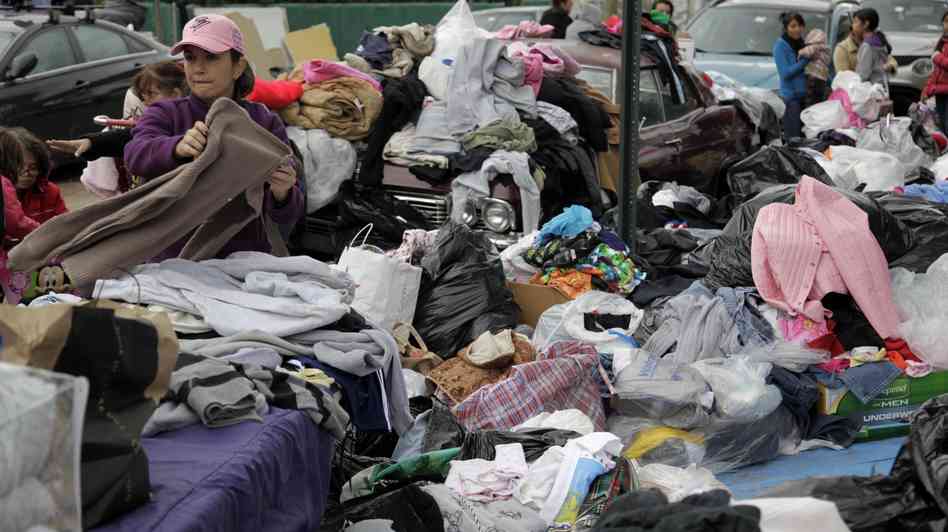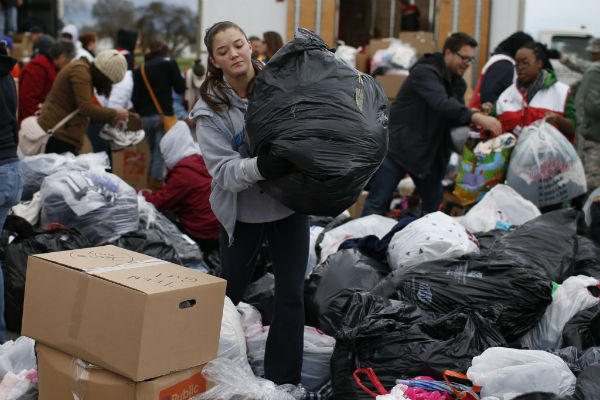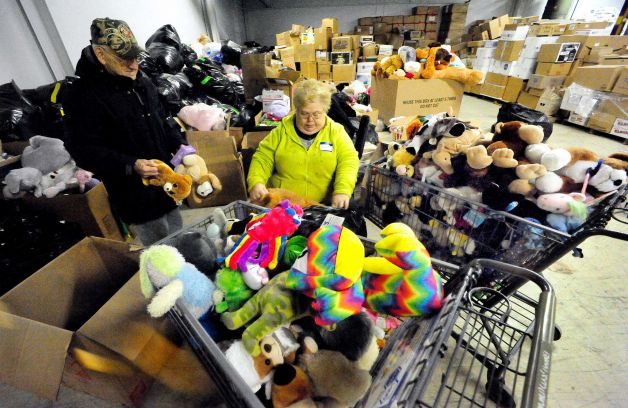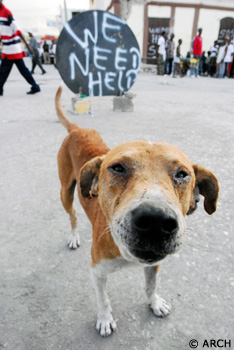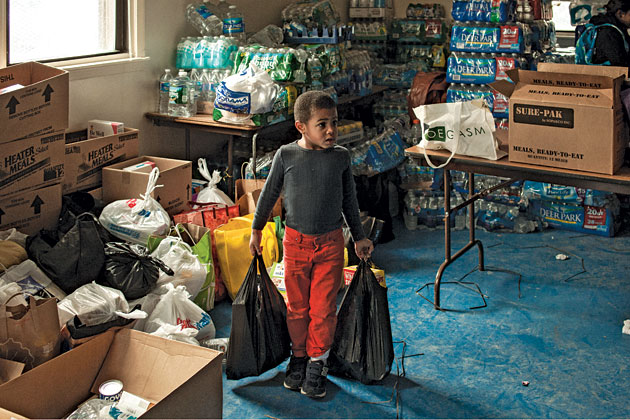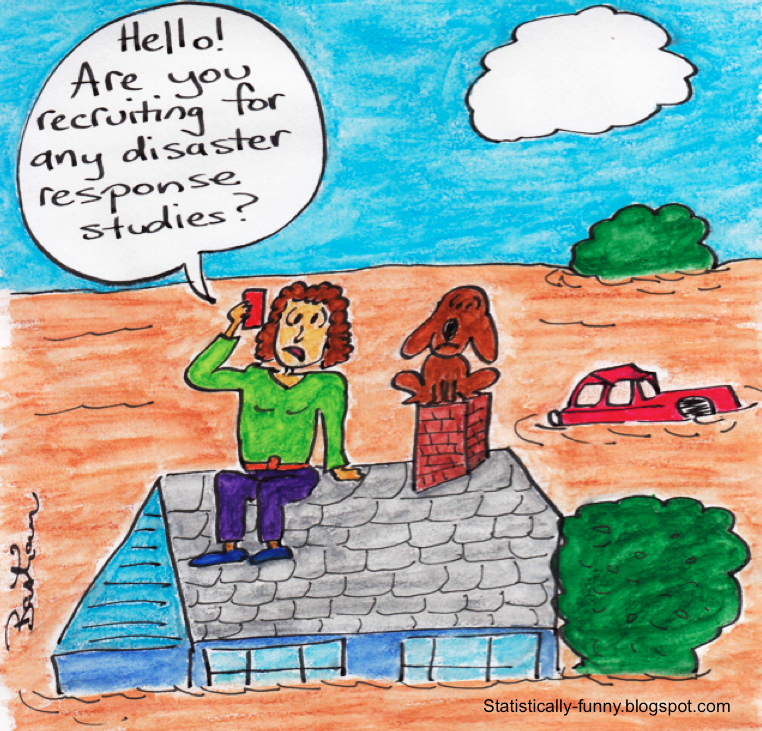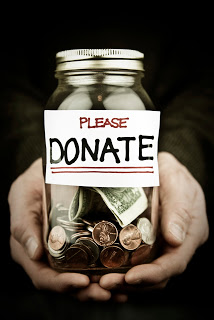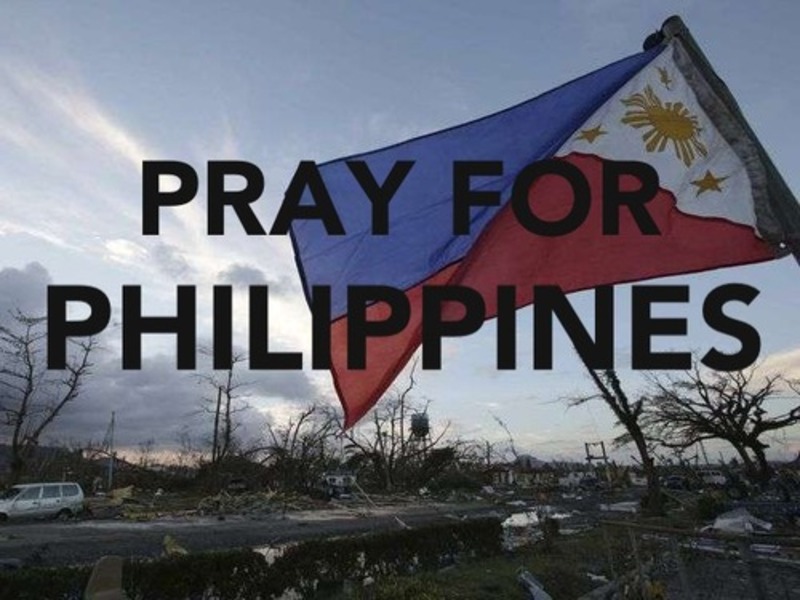Clothes, Medicine And 8 Other Worst Things To Donate During A Disaster #Haiyan
The kindness in us makes us want to help during a disaster, especially after the destruction of a natural disaster like tsunami or typhoon. For those of us who are not trained in first aid nor disaster response, we often help by donating money or hand-me-downs. However, our kind donations or unsolicited help can become a burden rather than aid. By avoiding this list of worst things to donate, we can channel our efforts to make a real difference for those in need.
1. Used clothings
Boxes of used clothing can actually hinder, rather than help, the recovery effort. The U.S. Federal Emergency Management Agency (FEMA) cautions that used clothing is "rarely a useful item" to collect and donate to disaster relief efforts.
Boxes of mixed clothing need to be sorted by size and type, cleaned in some cases, repackaged and deployed to those who need it most. If relief agencies and local officials don't have the volunteer resources to wade through all of the donations, the clothing will quickly fill warehouses or end up in the landfill with the rest of the disaster debris.
We do not encourage contributions in-kind, largely because of the substantial cost of shipping goods and cost of storage at the disaster location.
mercy.org.my2. Shoes and footwear
Volunteers seem a bit overwhelmed as they sort through the thousands of shoes donated to evacuees of Hurricane Katrina in the Astrodome complex in Houston, Texas.
Image via ddmcdn.comWhen drivers couldn't find willing recipients for truckloads of clothing sent to affected communities after Hurricane Andrew in 1992, they "unloaded them on the side of the road," a disaster worker said. "The heat and usual afternoon summer rains quickly turned the piles into heaps of stinking, rotting cloth."
There are cultural differences regarding shoes and other footwear. In other words, those shoeless flood victims might not need or want a pair of patent leather pumps.
In some cases, an organization will call for donations of a particular kind of footwear; flip-flops, for example, are lighter to ship and more useful in tropical climates.
3. Blankets
After the disastrous 2011 earthquake in Japan, relief workers complained of "too many blankets" and "too many clothes" hampering the cleanup effort.
Moreover, unloading and storing or disposing of unnecessary donations can take away from more important relief efforts. When trucks, planes or ships laden with donations arrive at a disaster site, responders face a difficult choice. Unloading and processing the cargo requires considerable human resources, yet if the cargo is not unloaded, it can block access for shipments that really are crucial.
While it's true that blankets are often critical in recovery efforts, they are seldom in short supply. However, if a relief organization asks for blankets, by all means follow their instructions.
qatarliving.com4. Teddy bears and toys
In the wake of the Sandy Hook Elementary School shooting, nearly all 20,000 square feet of a warehouse was packed with donated toys for the victims. "It's a little overwhelming for us," said First Selectman Pat Llodra. "On the one hand, we really treasure that outpouring of love and support. At the same time, it's beyond our capacity to use effectively."
Matt Cole, one of the organizers of the vigil, encouraged people to give money instead to the United Way, which has set up a fund for the families of the victims. "A teddy bear is wonderful, but a teddy bear can't pay for counseling," said Cole. "A teddy bear can't pay for a funeral."
5. Medicine from your cabinet
A medical volunteer at a refugee camp sorts through piles of donated medical supplies
Image via netdna-cdn.comThere is really no reason for individuals to donate medicine or medical supplies to a disaster relief effort. And under no circumstances should you donate opened or unused medications from your personal supply, particularly prescription drugs. Not only is it a waste -- they will need to be thrown away -- but they could pose a danger to those handling the drugs.
Disaster relief agencies and first responder units are usually well-stocked with the provisions to manage a medical crisis. When there is a need, they will work directly with drug companies and medical suppliers get the right supplies to the right place.
6. Pet supplies
Consider what happens when a plane full of unwanted donations is competing for runway space with planes carrying needed medicines and food items. Someone has to unload those donations, someone needs to sort through them for customs, someone needs to truck them to affected areas which are hard to reach anyway and where there’s a limited supply of fuel.
slate.comShipping heavy boxes of supplies to a disaster area is not an efficient use of money and resources. If you want to help animals during a disaster, don't send heavy bags of pet food and litter. Donate to the American Humane Association or the American Society for the Prevention of Cruelty to Animals, which will ensure that animals receive the food, shelter and medical care that they need.
7. Bags of mixed items
Imagine a large warehouse full of boxes of every shape, size and weight. Some of have been shrink-wrapped, labeled and loaded on pallets for easy transportation and storage, but others are entirely unlabeled and sealed with 47 strips of Scotch tape. Think of the volunteer man power and hours required to open and empty each of these boxes, identify the contents, sort the usable from the unusable, repack the good stuff, transport it to the right location and dispose of the junk.
FEMA strongly encourages people to refrain from shipping mixed boxes of relief supplies to disaster areas. The effort required to sort unsolicited donations is a strain on volunteer resources and a waste of funds (yours, the government's, and relief organizations').
8. Canned food and bottled water
Remember that every box of donations has to be opened, inspected and sorted. Food requires much closer inspection that other donations, because cans could be expired or damaged, at which point they become a health risk to the survivors. Then the food needs to be organized by type, repackaged and distributed to the people who need it the most.
If you're determined to send physical donations, do so in conjunction with an organization that has made a specific request and is set up to receive and distribute them. And remember that donating supplies can have the unintended consequence of taking business away from hard-hit local merchants.
9. Unsolicited help
"Well-meaning individuals who simply show up to help without prior contact or coordination with disaster management personnel in Missouri can further complicate or even hinder response and recovery operations already underway."
Here are some other reasons not to just show up: Disaster areas are often low on food and lodging. Do you know where you would stay? Diseases like malaria and cholera spread quickly during these times, particularly in developing countries, and the last thing anyone needs is another ill person. Finally, consider the tasks at hand: Do you have special skills or training that would be useful in a disaster situation? If not, leave it to the professionals
10. Money to the wrong people
We've stressed the importance of donating cash rather than goods in times of disasters. But, beware of people who set up phony charitable organizations to scam generous donors.
THE BEST WAY TO HELP: Cash donations, fund raising and professionally trained responders
With cash donations, MERCY Malaysia is able to purchase supplies in local regions or closer to the affected areas. This ensures that donation from the public is channeled to the people who need it most, and not utilised unnecessarily to cover logistic costs such as transportation, fuel and warehouse space rental.
mercy.org.myOne alternative worth considering is to gather physical donations, then hold a sale and give the proceeds to a relief organization.
Here's another reason that cash is preferred, particularly for overseas disasters: Not only do relief organizations save money on shipping, they can often purchase the food close to the disaster zone, which helps to revive the local economy of the hard-hit nation and helps them rebuild their life faster
People in the midst or aftermath of a crisis may have no way to find out what’s going on. You can spread the awareness and call for donations via social media.
If you want to donate your time and energy to disaster recovery -- a noble and necessary effort -- the best thing to do is affiliate with a national organization dedicated to disaster response. Enroll yourself in relief organizations that offer training in advance of disasters so they're ready to mobilize when the need arises. And you will be too.
Inspired to HELP? Help Haiyan Victims. Here's A List Of Trusted Organisations You Can Donate To.
Inspired to HELP? Help Haiyan Victims. Here's A List Of Trusted Organisations You Can Donate To.
Image via amazonaws.com